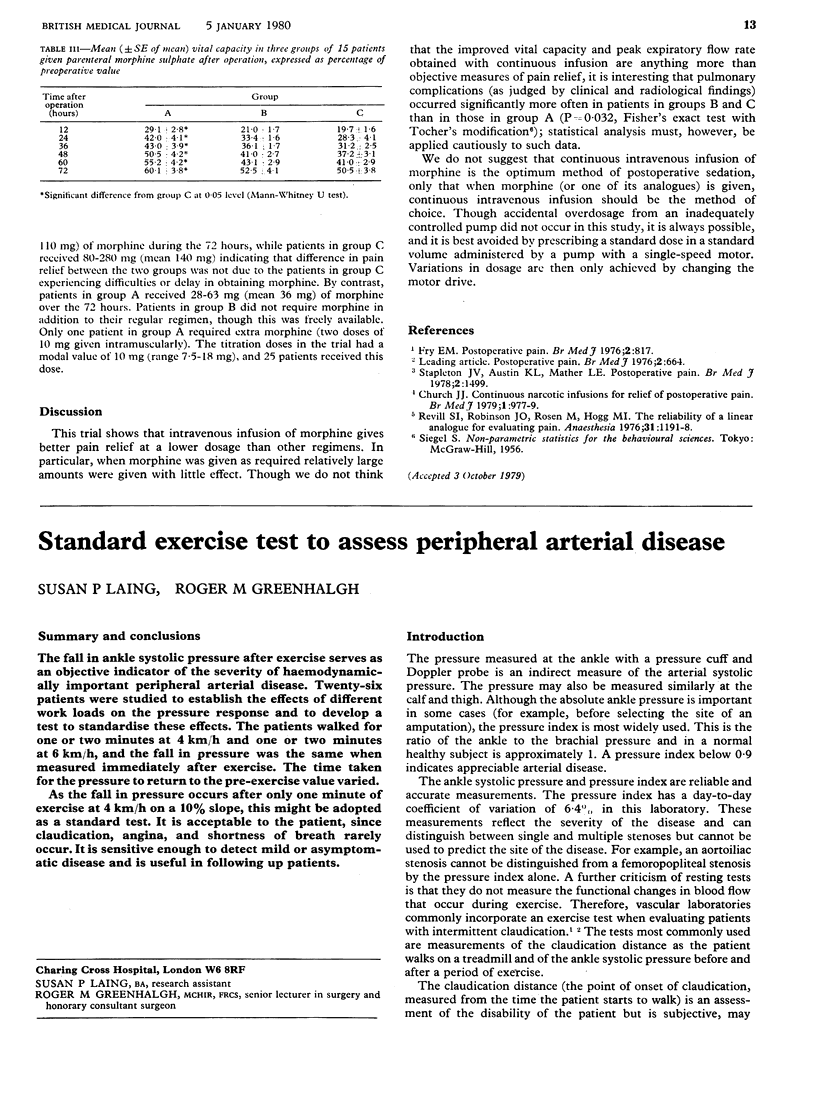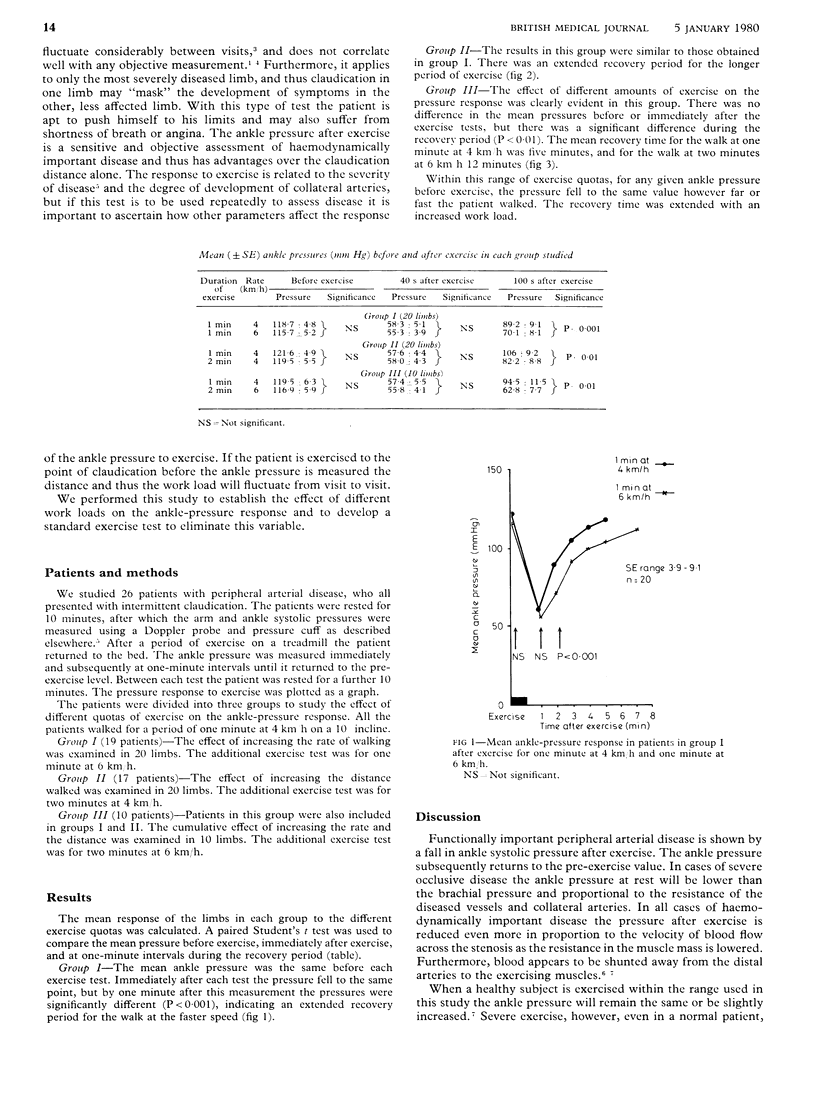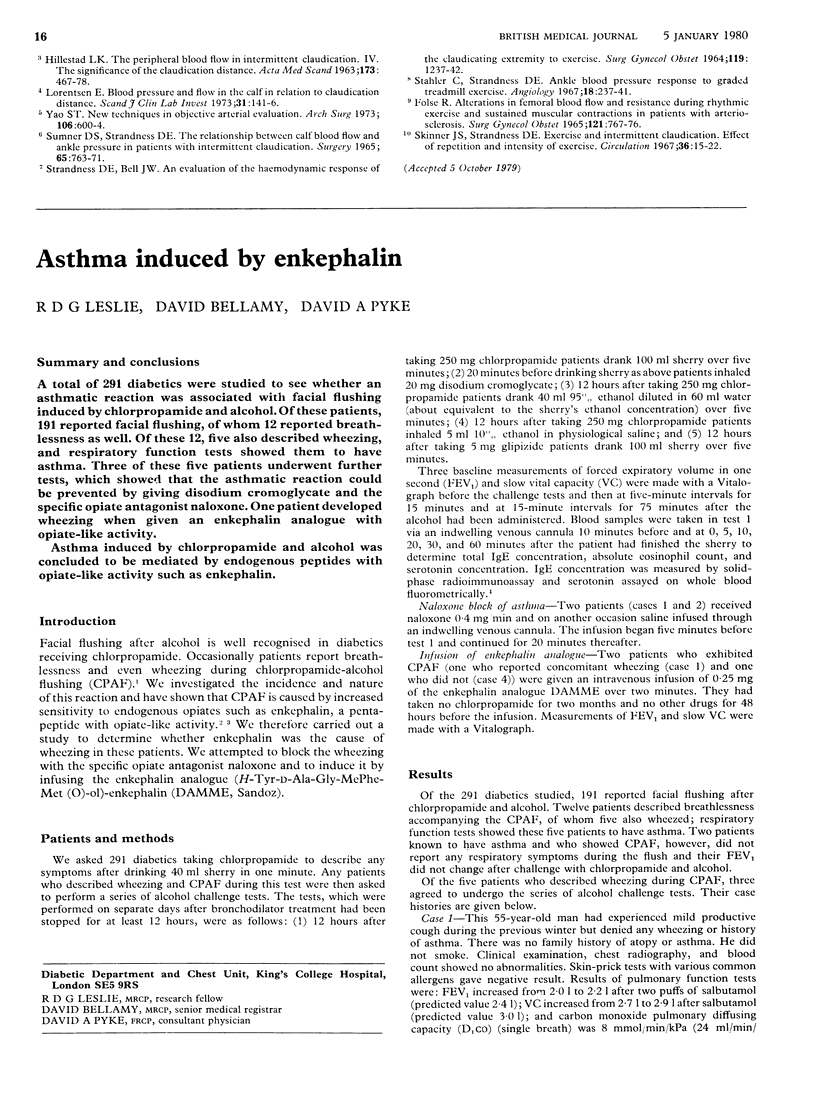Abstract
The fall in ankle systolic pressure after exercise serves as an objective indicator of the severity of haemodynamically important peripheral arterial disease. Twenty-six patients were studied to establish the effects of different work loads on the pressure response and to develop a test to standardise these effects. The patients walked for one or two minutes at 4 km/h and one or two minutes at 6 km/h, and the fall in pressure was the same when measured immediately after exercise. The time taken for the pressure to return to the pre-exercise value varied. As the fall in pressure occurs after only one minute of exercise at 4 km/h on a 10% slope, this might be adopted as a standard test. It is acceptable to the patient, since claudication, angina, and shortness of breath rarely occur. It is sensitive enough to detect mild or asymptomatic disease and is useful in following up patients.
Full text
PDF



Selected References
These references are in PubMed. This may not be the complete list of references from this article.
- Folse R. Alterations in femoral blood flow and resistance during rhythmic exercise and sustained muscular contractions in patients with arteriosclerosis. Surg Gynecol Obstet. 1965 Oct;121(4):767–776. [PubMed] [Google Scholar]
- Fronek A., Coel M., Bernstein E. F. The importance of combined multisegmental pressure and Doppler flow velocity studies in the diagnosis of peripheral arterial occlusive disease. Surgery. 1978 Dec;84(6):840–847. [PubMed] [Google Scholar]
- HILLESTAD L. K. The peripheral blood flow in intermittent claudication. IV. The significance of the claudication distance. Acta Med Scand. 1963 Apr;173:467–478. doi: 10.1111/j.0954-6820.1963.tb17430.x. [DOI] [PubMed] [Google Scholar]
- Lorentsen E. Blood pressure and flow in the calf in relation to claudication distance. Scand J Clin Lab Invest. 1973 Mar;31(2):141–146. doi: 10.3109/00365517309084302. [DOI] [PubMed] [Google Scholar]
- STRANDNESS D. E., Jr, BELL J. W. AN EVALUATION OF THE HEMODYNAMIC RESPONSE OF THE CLAUDICATING EXTREMITY TO EXERCISE. Surg Gynecol Obstet. 1964 Dec;119:1237–1242. [PubMed] [Google Scholar]
- Skinner J. S., Strandness D. E., Jr Exercise and intermittent claudication. I. Effect of repetition and intensity of exercise. Circulation. 1967 Jul;36(1):15–22. doi: 10.1161/01.cir.36.1.15. [DOI] [PubMed] [Google Scholar]
- Stahler C., Strandness D. E., Jr Ankle blood pressure response to graded treadmill exercise. Angiology. 1967 Apr;18(4):237–241. doi: 10.1177/000331976701800406. [DOI] [PubMed] [Google Scholar]
- Sumner D. S., Strandness D. E., Jr The relationship between calf blood flow and ankle blood pressure in patients with intermittent claudication. Surgery. 1969 May;65(5):763–771. [PubMed] [Google Scholar]
- Yao J. S. New techniques in objective arterial evaluation. Arch Surg. 1973 Apr;106(4):600–604. doi: 10.1001/archsurg.1973.01350160212038. [DOI] [PubMed] [Google Scholar]
- Yao S. T., Needham T. N., Gourmoos C., Irvine W. T. A comparative study of strain-gauge plethysmography and Doppler ultrasound in the assessment of occlusive arterial disease of the lower extremities. Surgery. 1972 Jan;71(1):4–9. [PubMed] [Google Scholar]


